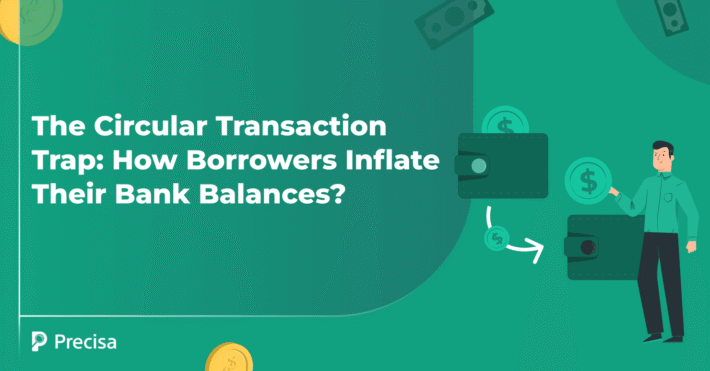Complete Guide to Duration vs Repricing Gap Analysis

In the current economic climate, managing interest rate risk has become paramount for lending institutions. The Reserve Bank of India (RBI) recently reduced the repo rate by 25 basis points to 6.00% in April 2025, aiming to stimulate economic growth amid global uncertainties.
This monetary easing, coupled with liquidity infusions totaling over ₹6.21 trillion, underscores the need for robust risk management frameworks. Two fundamental tools in this domain are duration gap and repricing gap analyses, each offering unique insights into a bank’s exposure to interest rate fluctuations.
What is Duration Gap Analysis?
In the context of interest rate risk, duration refers to the weighted average time it takes to receive the cash flows associated with a financial asset or liability. It reflects how sensitive the value of an asset or liability is to changes in interest rates — the longer the duration, the more sensitive it is.
Duration gap analysis is a risk management tool that measures the difference between the durations of a financial institution’s assets and liabilities. It helps assess how changes in interest rates will affect the institution’s net worth.
This analysis focuses on three key variables:
- Leverage-adjusted duration gap
- Size of the financial institution’s balance sheet (total assets)
- Magnitude of the interest rate shock
For example:
- A positive duration gap means that assets have a longer duration than liabilities — making the institution more vulnerable to rising interest rates, which could reduce the market value of assets.
- A negative duration gap, on the other hand, indicates greater sensitivity to falling rates.
Lending institutions can use duration gap analysis to align asset and liability durations, diversify their asset mix, and reduce interest rate exposure — all of which support more stable, forward-looking portfolio strategies.
Strengths
Duration gap analysis offers several advantages:
- Holistic risk assessment: Helps lenders assess default risk in loan portfolios by considering both the timing and the amount of cash flows.
- Better financial gains: Maturity management can reduce risk exposure, improving overall financial health.
- Informed decision-making: The analysis provides actionable insights into different scenarios that can be utilised in efficient portfolio management.
Weaknesses
Critics of duration gap analysis argue that the process is:
- Costly and highly complex: The analysis involves balance sheet restructuring, complex calculations, and assumptions that limit accessibility for smaller institutions that don’t have sophisticated tools.
- Prone to Inaccuracy: Duration gap analysis is designed for fixed cash flows over time and doesn’t account for the high variability. This can lead to inaccuracies in the analysis.
What is Repricing Gap Analysis?
The repricing gap measures how quickly the interest rates on a bank’s assets and liabilities can change. Also known as the funding gap model, it focuses on the difference between the interest income earned and interest paid on assets and liabilities, respectively, over a given repricing time period.
Now, repricing time period means the time taken by assets or liabilities to adjust their interest rate changes to reflect market rates.
Repricing gap analysis quantifies the difference between rate-sensitive assets (RSAs) and liabilities (RSLs). A positive gap indicates a higher holding of RSAs than RSLs. Therefore, the bank’s assets will reprice upward faster, increasing net interest income in response to the rise in interest rates.
For instance, a bank can use repricing gap analysis to determine the most vulnerable period to interest rate changes and their impact on its earnings.
Strengths
Repricing gap analysis offers several advantages:
- Less complex and economical: It is suitable for smaller institutions with limited resources. Its simple calculations require less data, making it a practical choice for these institutions.
- Provides a comprehensive view of short-term interest rate risk: Offers multiple time buckets (one day, one day to three months, etc.), which allows for better measurement of sensitivity in smaller time frames.
Weaknesses
There are many gaps in the applicability of the repricing gap analysis:
- Overlooks market value effects: The analysis mainly includes only book value. However, interest rate changes can adversely affect the market value of assets and liabilities. Thus, the repricing model is only a partial measure of interest rate risk.
- Over-aggregation: Rate-sensitive assets and liabilities might not be evenly distributed within a maturity bucket.
- Theoretical assumptions in analysis: In real-world scenarios, the interest rate changes are not uniform across all assets and liabilities.
What is the Suitable Analysis Method for Your Lending Business?
Both the gap analysis models can be used to measure interest risk exposures in lending businesses; however, the applicability of the model will depend upon a number of factors:
- Time Horizon: Long-term risks vs. short-term risks.
- Complexity and size of institution: Availability of expertise and tools.
- Risk management goals: Long-term stability vs. short-term liquidity.
Scenario to Choose a Duration Gap Analysis
Duration gap analysis must be chosen when a financial institution wants to analyse long-term risks. It has sophisticated tools for complex analysis requiring detailed data inputs on the timing of cash flows and sensitivity to interest rate changes.
For example, it is helpful for mortgage portfolios.
When Should You Choose Repricing Gap Analysis
Suppose a small institution wants to analyse interest risks in short-term loans. In that case, the repricing gap analysis is a better option. On monitoring the assets and liabilities in different repricing intervals, one can find a balanced gap to manage interest rate changes swiftly in times of volatility.
For example, credit unions providing consumer loans can use this model.
However, combining both models would provide a better and more comprehensive risk management strategy for a lending business with a combination of short-term and long-term assets.
Takeaway
Managing interest rate risks is a crucial component of risk management strategy. Leveraging the duration gap and repricing analysis models as per their applicability would strengthen the stability of lending businesses.
Both models required detailed data inputs for the risk analysis. Precisa, a cloud-based platform, provides various tools for this.
Using Precisa’s bank statement analysis tool, lenders can analyse assets and liabilities quickly and efficiently with automatic data categorisation. The universal account aggregator framework enables access to integrated information from multiple sources.
The real-time insights ensure you can stay ahead of interest rate fluctuations and manage your loan portfolio confidently and hassle-free.
Request a free demo today!




